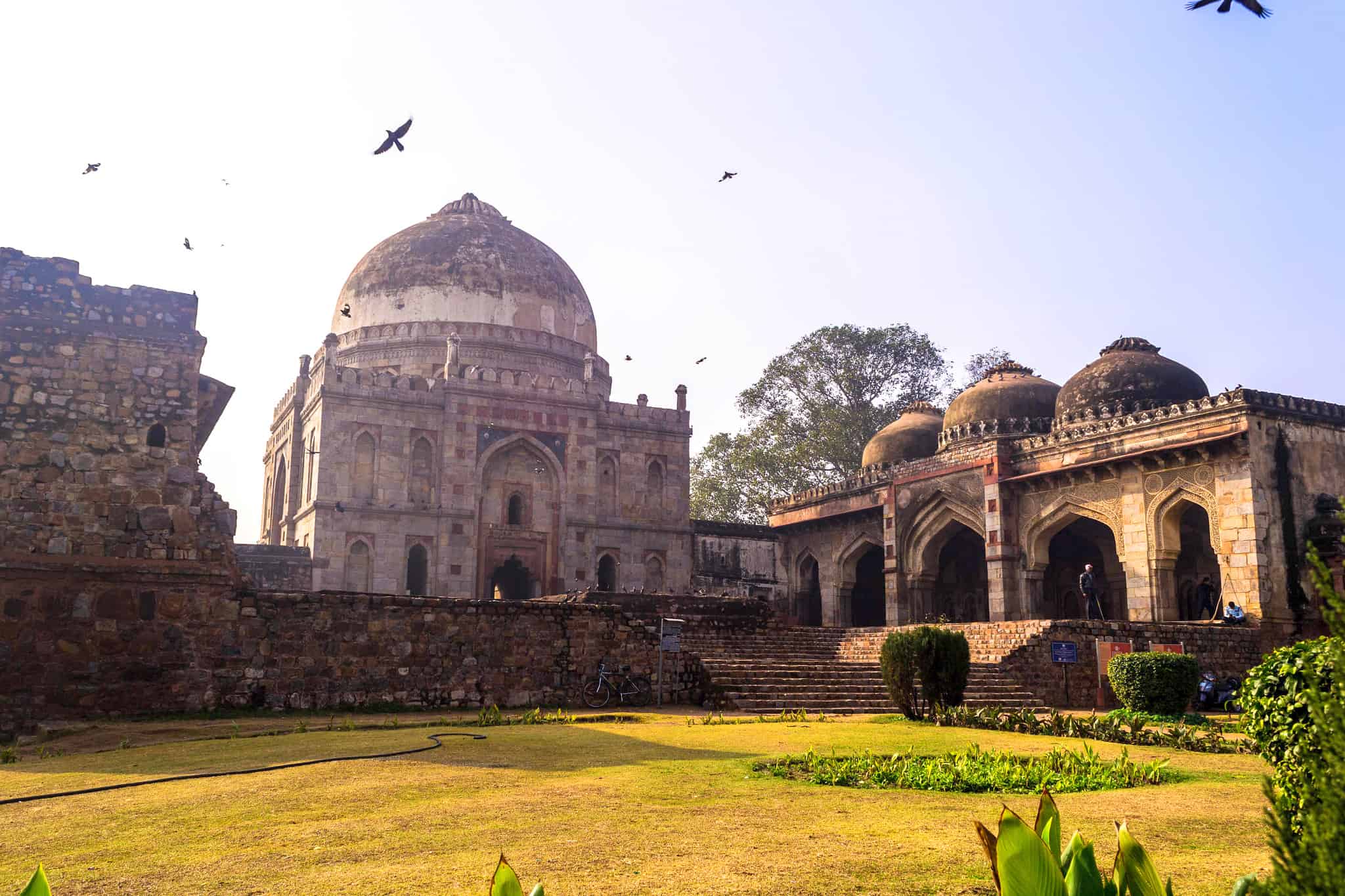Visitors to New Delhi always come home singing the praises of sights like the complex Swaminarayan Akshardham Temple or the world famous Red Fort, but what about the colourful Kinari Bazaar or the imposing fort Tughlaqabad? These sights are in no way inferior to New Delhi's most popular monuments, but rather only suffer from the crime of being off the usual path. New Delhi is such a big and, at times, overly complex city that some tourists are afraid of getting lost in it. However, for those that do, they will see an expansive city full of culture and history.
Lodi Garden
 https://www.flickr.com/photos/kumaravel/
https://www.flickr.com/photos/kumaravel/
After ancient Delhi was sacked by Timur Lane, the last of the Lodi and Sayyid Sultans rose to the throne. Unable to build their own cities as was typical to a change in leadership due to an empty treasury, they had to settle with only building intricate toms and mosques instead. Today, the majority of these fantastic buildings are hidden away within the Lodi Garden, one of the most picturesque gardens in the city. Visitors that venture here for sightseeing, serenity and photography will almost always see residents lounging on the lawns amongst the fabulous mosques enjoying yoga, picnics or just taking in some nice weather. The highlight of the garden is the Safdarjung's Tomb, one of the last magnificent pieces of Mughal architecture left in the Delhi area. Influenced by Persian gardens, the marble mausoleum was constructed in 1754 by the influential Mughal Viceroy of Awadh. For those that can't make it out to visit the Taj Mahal, this tomb makes for fine consolation.
Kinari Bazaar
 https://www.flickr.com/photos/acmpix/
https://www.flickr.com/photos/acmpix/
The treasure trove that is the Kinari Bazaar lies hidden amongst what is one of New Delhi's most enchanting areas - the Old City. Just off Dariba Kalamn, a lane famous for its talented jewelers, the market sits, thriving in its costume of bright fabrics and perfume of spices, oils and a deluge of other indistinguishable smells. This market not only serves the local residents of the area, but it is also the premiere area for costumewear and traditional Indian apparel. During holidays and religious festivals in New Delhi, particularly Hindu staple of Dussehra, the Kinari Bazaar becomes a hotspot in the city; visitors need only to follow the crowds. Visitors stroll the charming, brightly coloured street where rolls of fabric sit on display along with a never-ending array of turbans, crowns, flowing saris and intricate kurtas. The Kinari Bazaar is a taste of what visitors expect from New Delhi and not the major chain stores that they often receive.
Sisgunj Gurudwara
New Delhi is a city of temples, many of which you can spot right off from afar. However, some temples can be barely distinguishable from the buildings that surround them. One such example is the Sisgunj Gurudwara. If not from the five gold dome-caped towers on its roof, it would look no different than the shops and apartments that surround it. The Sisgunj Gurudwara is dedicated specifically to wealth and prosperity, but instead of showing it off on the exterior, the grandeur of Sisgunj Gurudwara lies within. The interior is decorated with polished white marble, gold and a variety of colourful flowers and fabric that give the temple a festive air. While it is dedicated to wealth and prosperity, the Sisgunj Gurudwara also commemorates the death of the ninth Sihk Guru Teg Bahadur who became a martyr after he was beheaded by the Mughal Emperor for refusing to convert to Islam.
Tughlaqabad
 https://www.flickr.com/photos/varunshiv/
https://www.flickr.com/photos/varunshiv/
The imposing fort city of Tughlaqabad was founded by the most ruthless and effective military commanders that India has ever know, Ghazi Malik. As the story goes, Ghazi Malik suggested that the Sultan build a fortress on the small hill in which Tughlaqabad now sits, and the Sultan responded in jest that Ghazi Malik should build it himself once he became the Sultan. As it turned out, he did become Sultan and did end up building the fortress himself from the pillaged materials of other Delhi cities. Although it is only a portion of its former glory and lies in ruins, the fort complex Tughlaqabad still inspires awe among those who visit. Today only the mosque of Begumpur remains standing and other ruins of the city can be explored in the beautiful verdant grounds.
Sulabh International Museum of Toilets
While a visit to the Indira Gandhi Memorial Museum or the National Gallery of Modern Art are a must while in New Delhi, how many can say that they paid a visit to the Sulabh International Museum of Toilets? In a city known for the dreadful visitor's infirmity of "Delhi Belly," it seems only fitting that it should have a museum dedicated solely to toilets. All snickering aside, the Sulabh International Museum of Toilets is actually run by a pioneering charity that has done extraordinary work bringing sanitation to the poorer areas of India. To help fund and bring attention to this important charity, the quirky museum shows off its series of toilet-related paraphernalia that dates back as far as 2,500 BC and spans all the way to the toilets of the future.
Related content on Canadian Traveller


